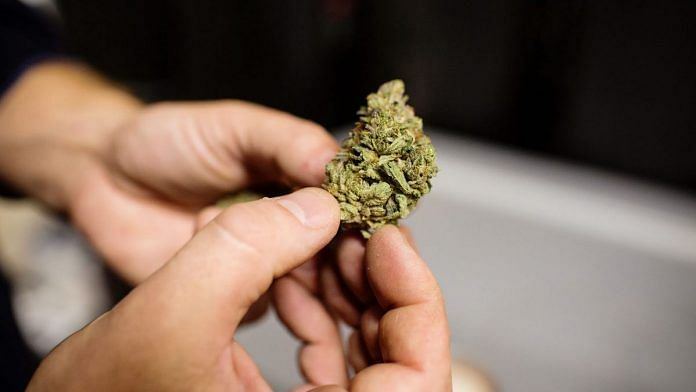New Delhi: Nearly 3 per cent Indians use cannabis to get high with Uttar Pradesh topping the chart in use of the narcotic substance, a recent government survey has found.
According to the survey, bhang is the most common form of cannabis used in the country, followed by ganja and charas.
Conducted by the Social Justice and Empowerment Ministry in collaboration with the All India Institute of Medical Sciences (AIIMS), the survey titled “Prevalence and Extent of Substance Use in India” covered all 36 states and Union territories.
The survey found that 3.1 crore Indians between the age of 10 and 75 years or 2.8 per cent of the total population used cannabis in the last twelve months to get high.
According to the government, about 72 lakh individuals need help for their cannabis use problems.
It said that though bhang use is more common, prevalence of harmful use is proportionately higher for people who smoke ganja and charas.
The states which have recorded use of cannabis more than the national average include Uttar Pradesh, Delhi, Sikkim, Chhattisgarh and Punjab, the report said.
In some states like Sikkim and Punjab, the prevalence of cannabis use disorders is more than thrice the national average.
In the World Drug Report 2018, the United Nations Office and Drugs and Crime (UNODC) has estimated that around 3.9 pc of the global population aged 15-64 years use cannabis.
On the other side, 2.06 per cent Indians use opioids, with heroin recorded as the most common form of drugs. About 1.14 per cent of the total population use heroin, while the rest use pharmaceutical opioids and opium, the survey said.
Besides, Punjab and the Northeastern states, Haryana and Delhi also displayed a high prevalence of current opioid use as well as opioid use disorders. Thirteen states in the country have more than one per cent prevalence of opioid use disorders which indicated a significant public health concern, the report said.
Uttar Pradesh, Punjab, Haryana, Delhi, Maharashtra, Rajasthan, Andhra Pradesh and Gujarat are the states which have the highest number of people with opioid use problems.
However, in terms of percentage of population affected, the top states in the country are those in the Northeast — Mizoram, Nagaland, Arunachal Pradesh, Sikkim, Manipur.
“Estimated prevalence of opioid use in India by this survey is considerably higher than the global and Asian averages, however prevalence of Cocaine use is much lower,” Atul Ambekar, principal investigator of the survey, also professor at National Drug Dependence Treatment Centre, AIIMS said.
He added, “Indeed, findings of this survey is an opportunity for UNODC to take note of the Indian data (and modify the global estimates, if required in the light of data from India).”
The last national survey on the extent, pattern and trend of drug abuse was sponsored by Ministry of Social Justice and Empowerment and was conducted by the United Nations Office on Drugs and Crime in the year 2000-2001. The report was published in 2004.
“Let us consider the report of the 2004 survey. Then, the prevalence of opioid use was 0.7 pc in India (including 0.5 pc of opium and 0.2 pc of heroin). Thus, in 2004, among men, opium use was more than twice that of heroin use,” the report stated.
“The current survey however shows that heroin use prevalence is higher than 2004 and has in fact surpassed the opium use. Currently, the prevalence of heroin use is twice as much of opium use (1.14 pc vs 0.52 pc), in total population (i.e. men and women),” it said.
If the data on opioid is use considered, Northeastern states share borders and have easy access to illicit opioid producing countries.
Nationally, it is estimated that there are about 8.5 lakh people who inject drugs (PWID). High numbers of PWID are estimated in Uttar Pradesh, Punjab, Delhi, Andhra Pradesh, Telangana, Haryana, Karnataka, Maharashtra, Manipur and Nagaland, the survey said.
Opioid group of drugs are predominantly injected by PWID (heroin – 46 per cent and pharmaceutical opioids – 46 per cent). –PTI
Also read: How legalising cannabis can help India ease some of its economic burden




